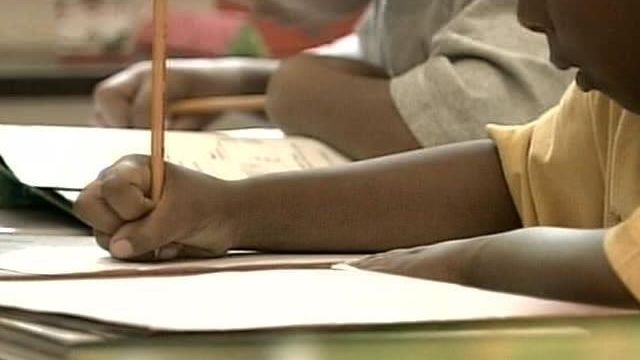Local News
'No Child Left Behind' results can be misleading
Fewer than half of North Carolina schools are meeting No Child Left Behind standards, but the label doesn't mean schools are necessarily failing.
Posted — UpdatedRALEIGH, N.C. — Fewer than half of North Carolina schools are meeting No Child Left Behind standards, but the label doesn't mean schools are necessarily failing.
At Heritage Middle School in Wake Forest, for example, 85 percent of students are where they should be in math, and the school exceeded its federal testing goal last year.
Still, it didn't pass No Child Left Behind standards because the No Child Left Behind is not based on overall results.
Heritage principal Dhedra Cross says the school isn't failing, but fears it's labeled to leave that impression.
"Everything we do is formulaic, and I don't think the public understands the formulas," Cross said.
No Child Left Behind is a federal law passed in 2001 and aimed to improve the performance of public schools and to increase accountability at the school, district and state levels.
It divides schools into categories based on race, income, English-speaking abilities and other factors. All groups have to perform at a certain level or schools can be penalized.
A school that receives federal funding and does not meet adequate yearly progress expectations in the same subject for two consecutive years must offer students the option of moving to a school that does.
For the 2007-2008 school year, less than a quarter of the schools in the Wake County Public School System met those standards, according to preliminary results released last month. Complete results will be available in November.
Out of those schools, 10 were required to offer students the option to transfer.
District leaders say higher achievement standards caused more schools to fall behind.
"The fact is, we have to keep evaluating our programs and make sure we reach every child," Wake County Board of Education Chairwoman Rosa Gill said.
Although there are things she would change, Gill says No Child Left Behind has its positives.
"The NCLB legislation gives us that push we need," she said.
With the confusion and controversy, however, even political supporters have said No Child Left Behind could change from its current format.
"I rewrote the bill for reauthorization. Sen. (Ted) Kennedy chose not to take it up this year," U.S. Sen. Richard Burr, R-N.C., said. "It was significantly different. I believe in accountability. North Carolina has a rich history of accountability in education."
This year, for middle school, 77 percent of students in each group had to pass. The more diverse a school is, the more groups there are to test.
"It's just one way to measure the school, but it's not the end-all, be-all of how to judge your school," said parent Patty Dutcher, whose children are enrolled at Zebulon Elementary School.
Despite huge gains, Zebulon Elementary did not pass No Child Left Behind.
Dhedra Cross likes the data, she says, "to help us keep our attention on groups that it would, perhaps, be easy to overlook."
But she hopes people understand the bigger picture beyond pass versus fail as it stands under No Child Left Behind.
• Credits
Copyright 2024 by Capitol Broadcasting Company. All rights reserved. This material may not be published, broadcast, rewritten or redistributed.






